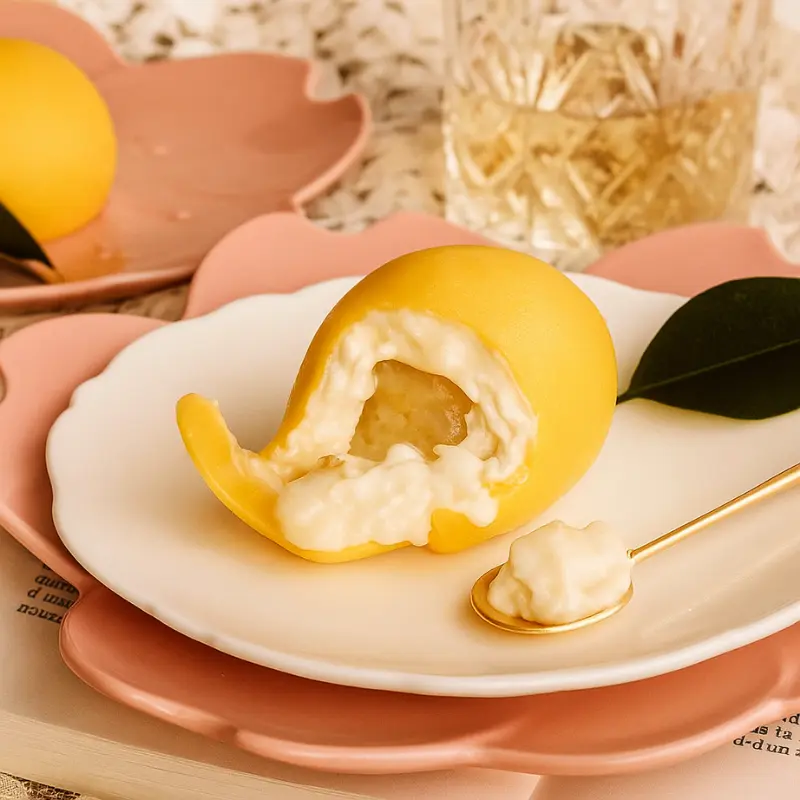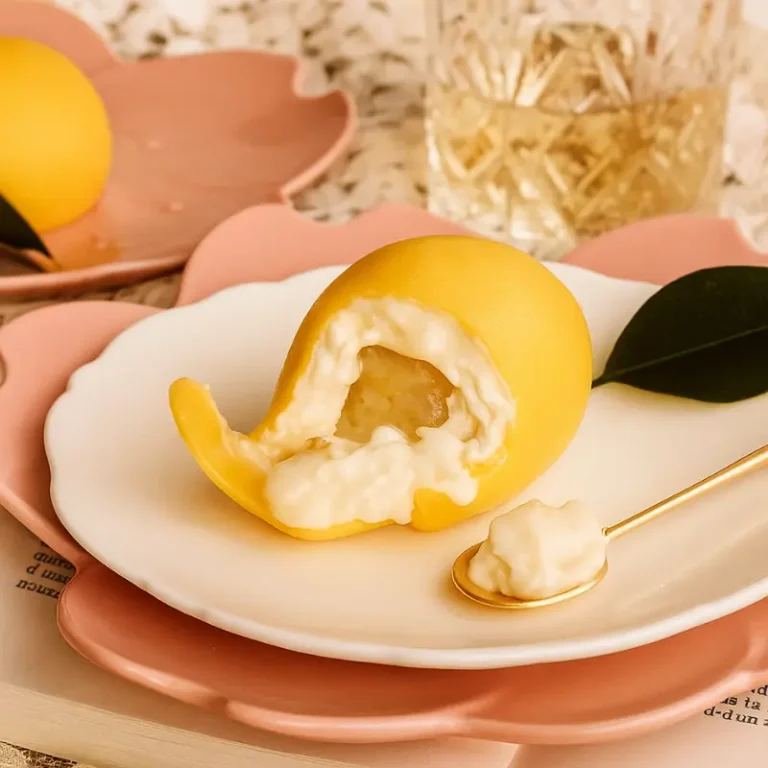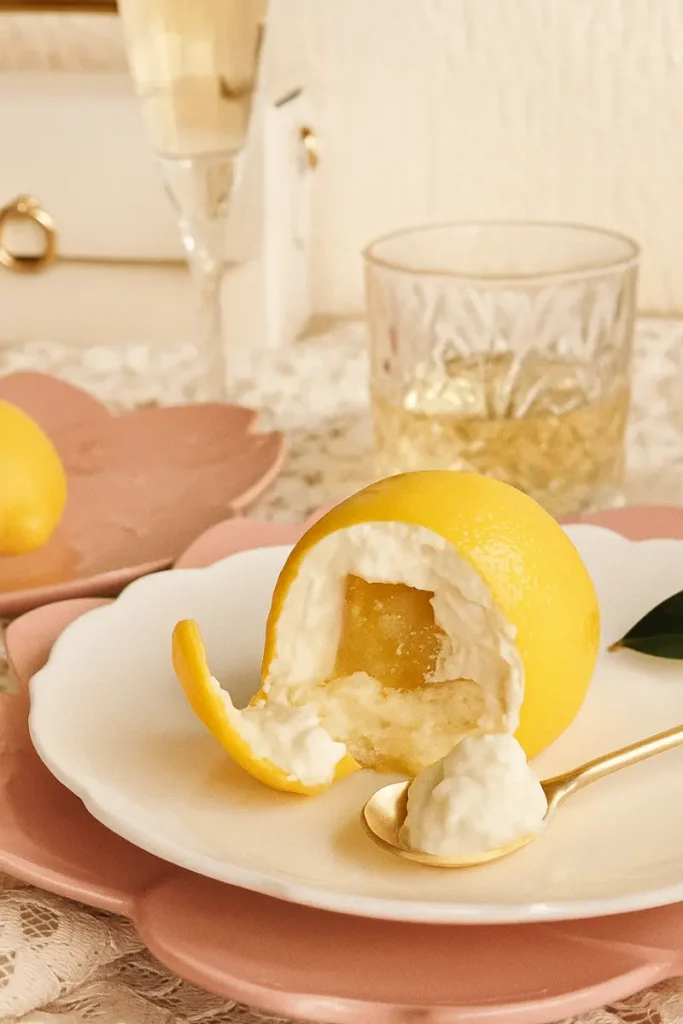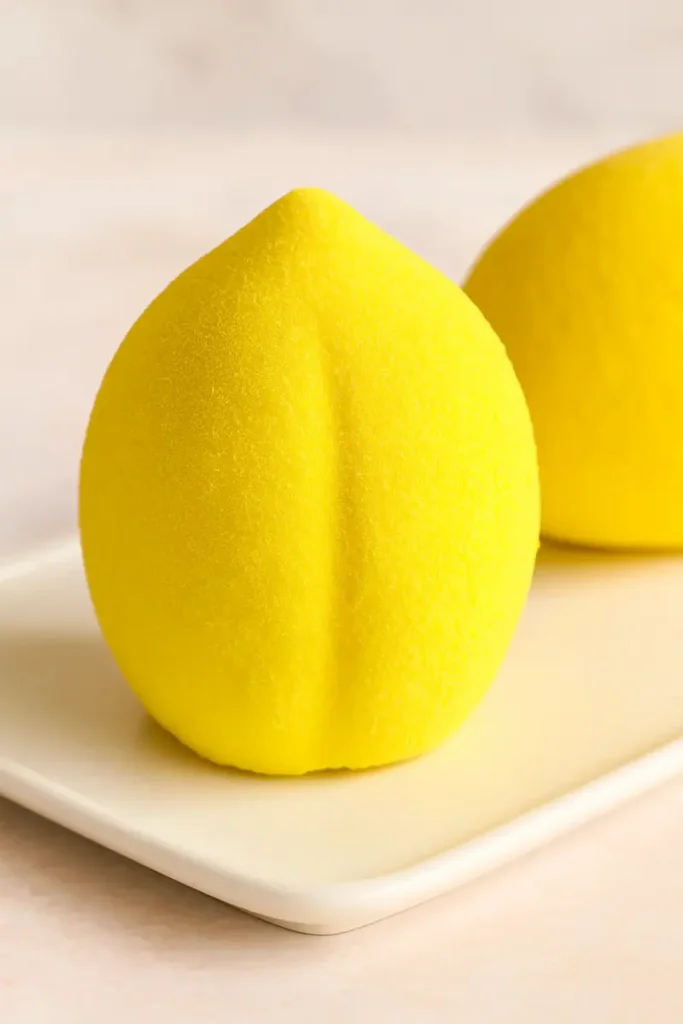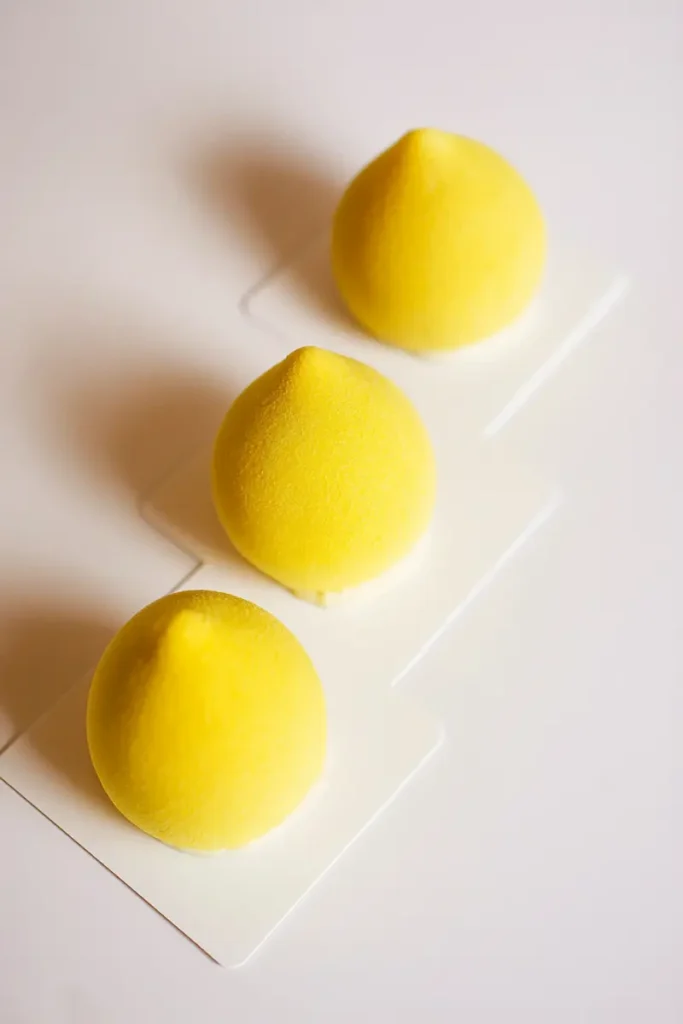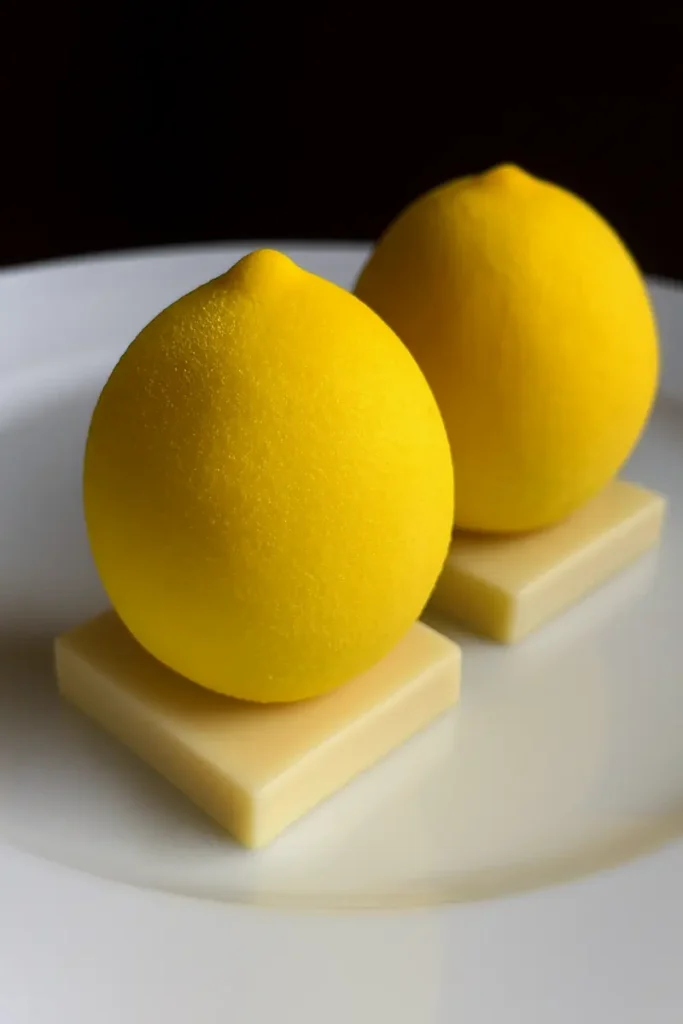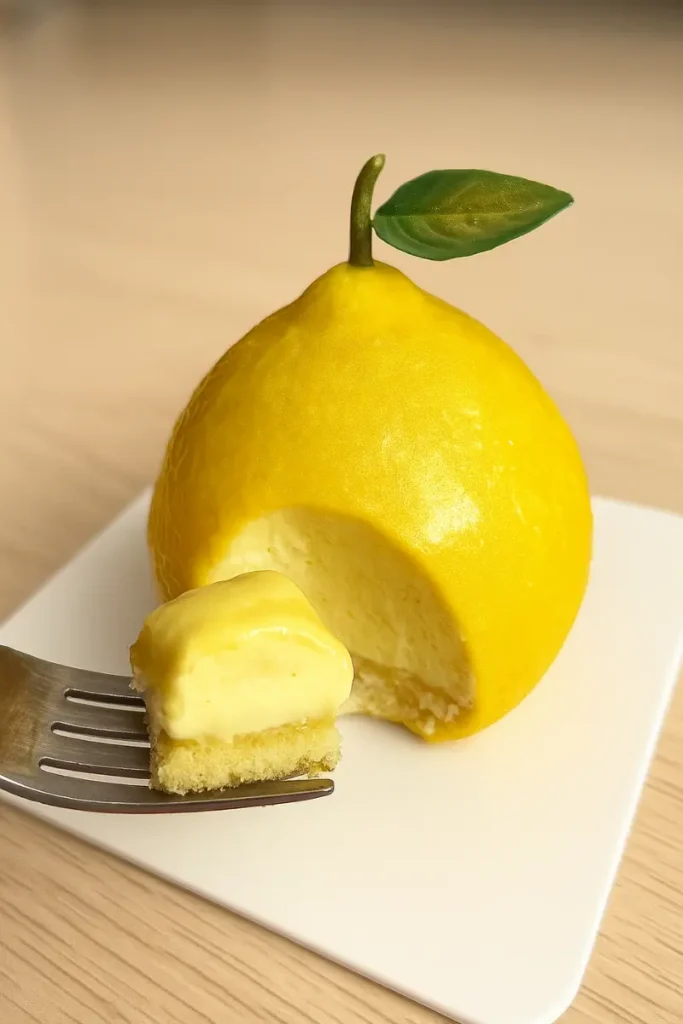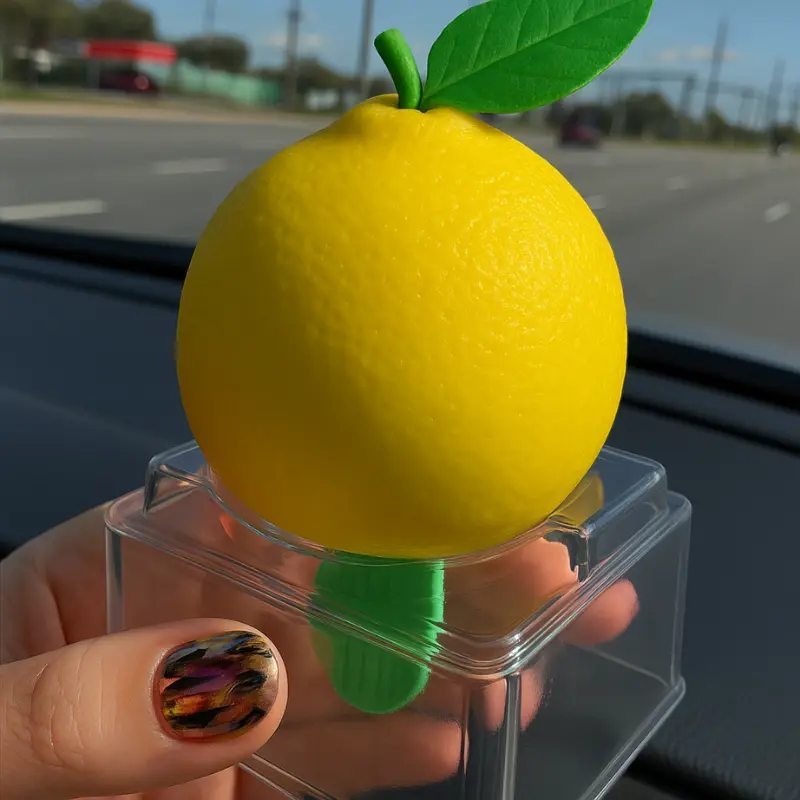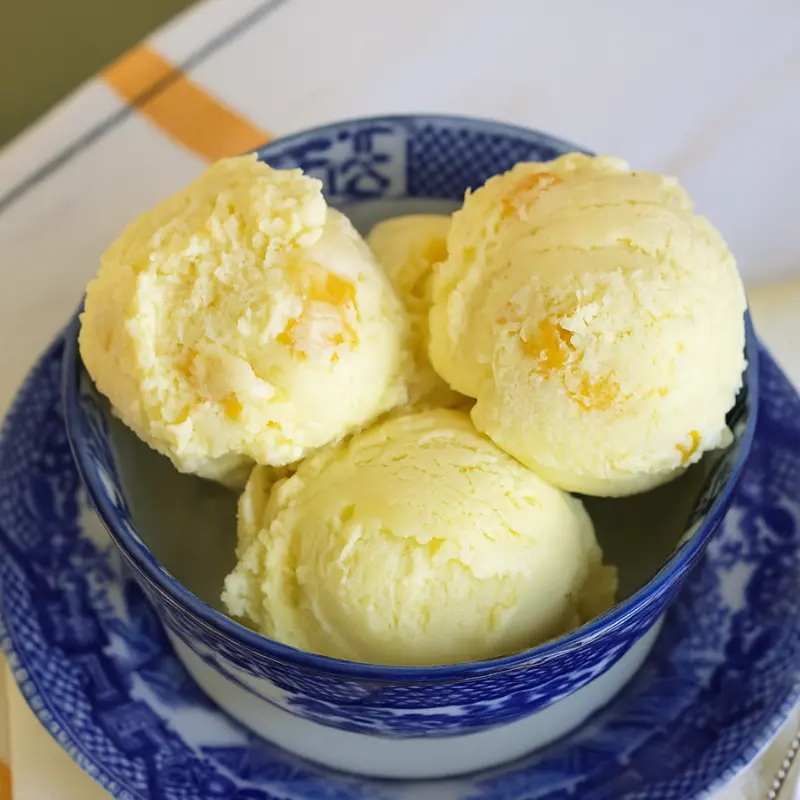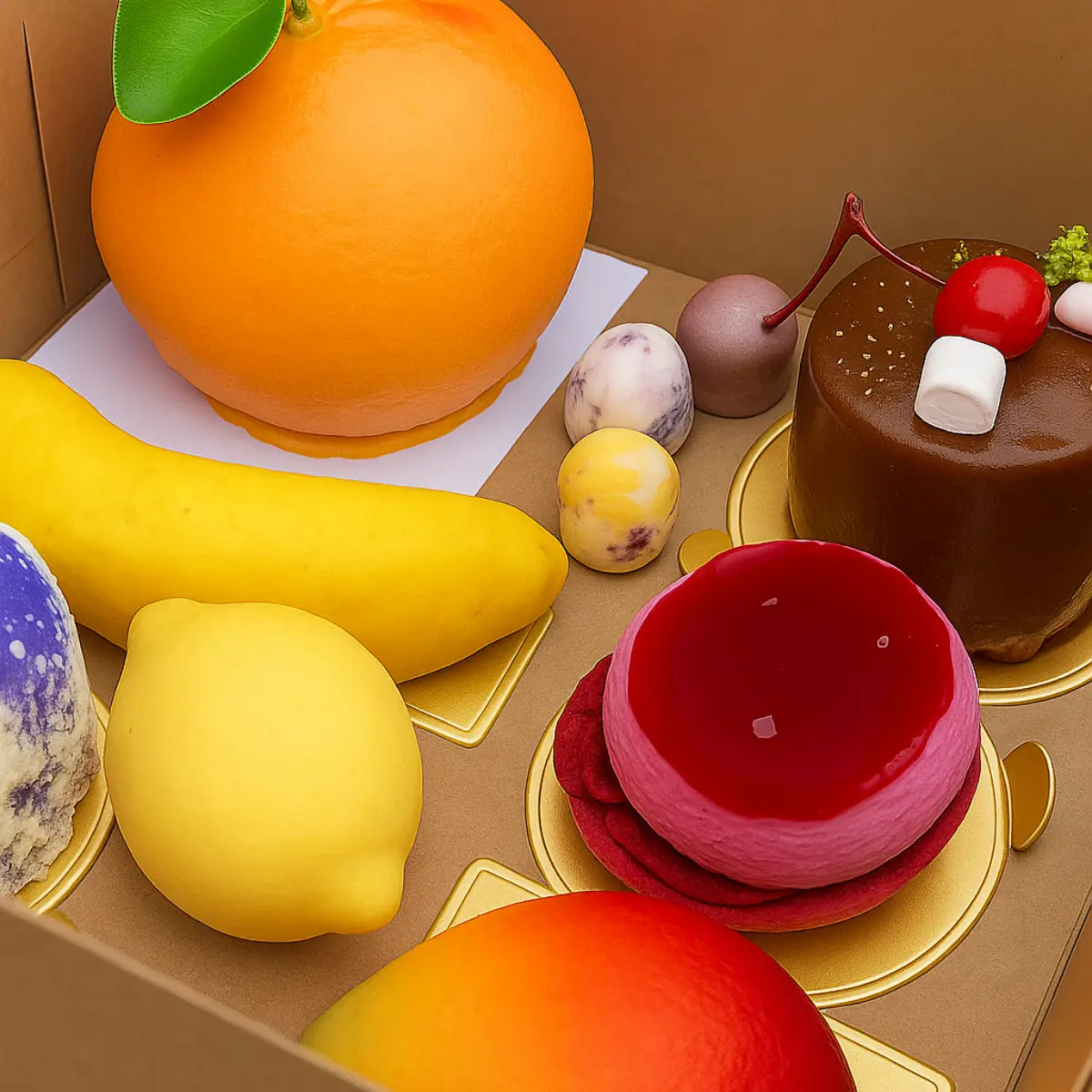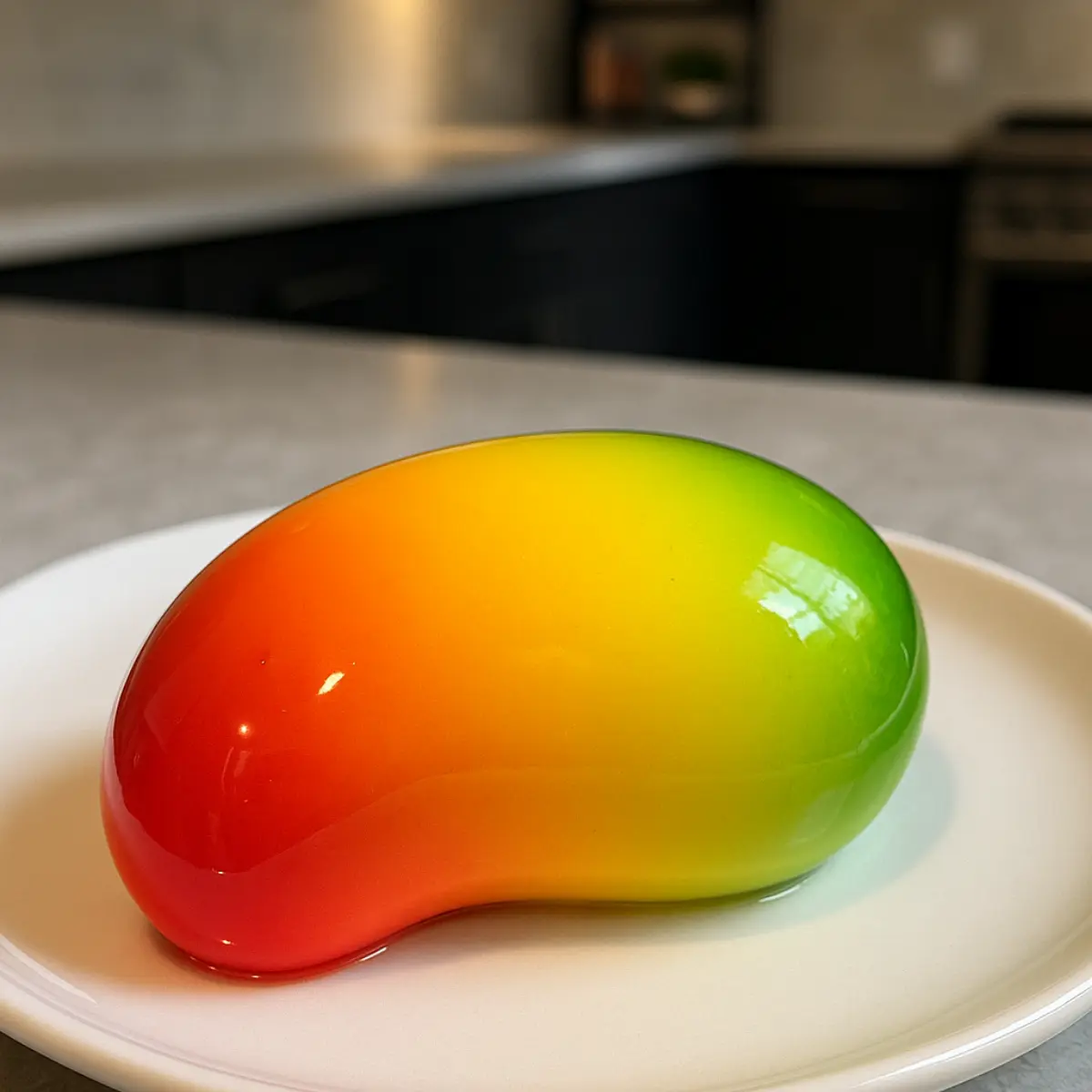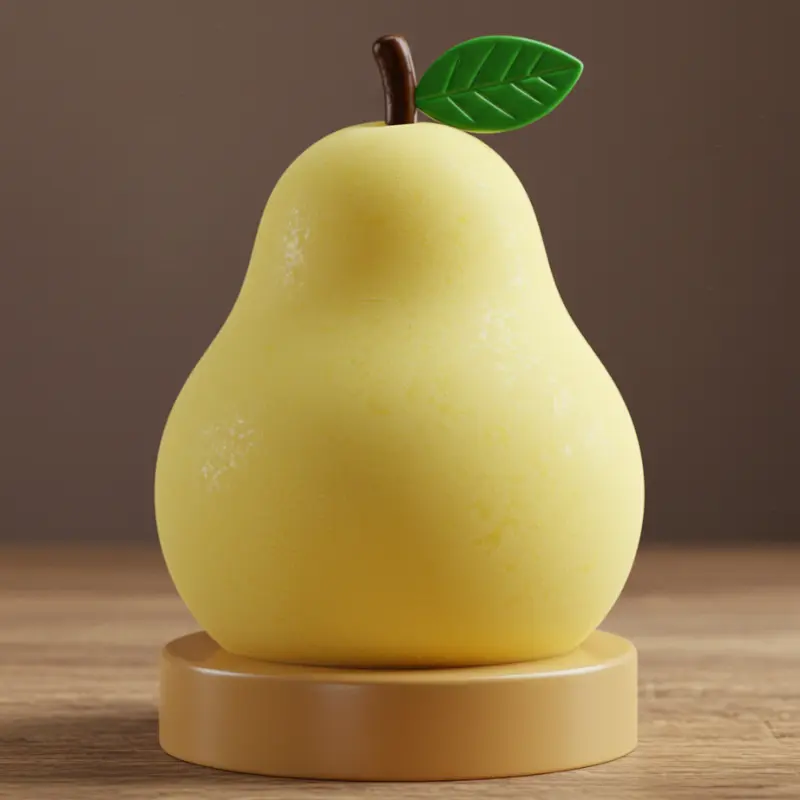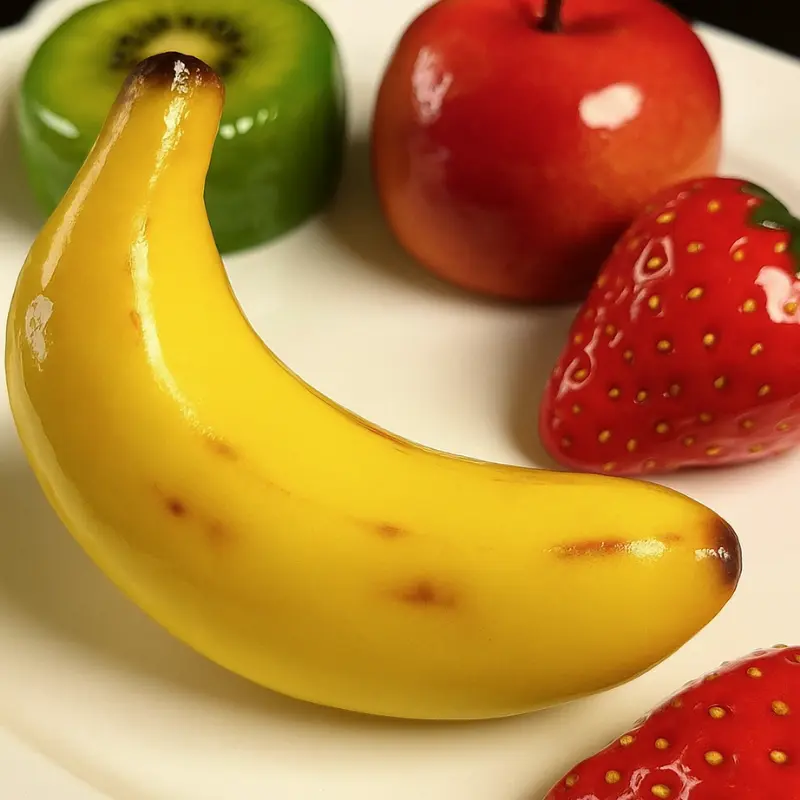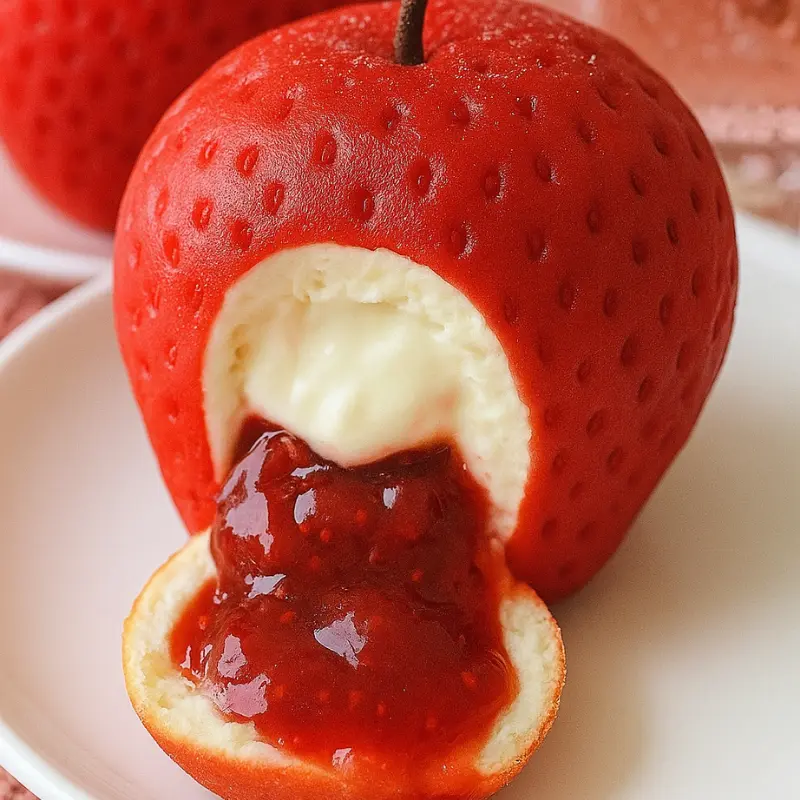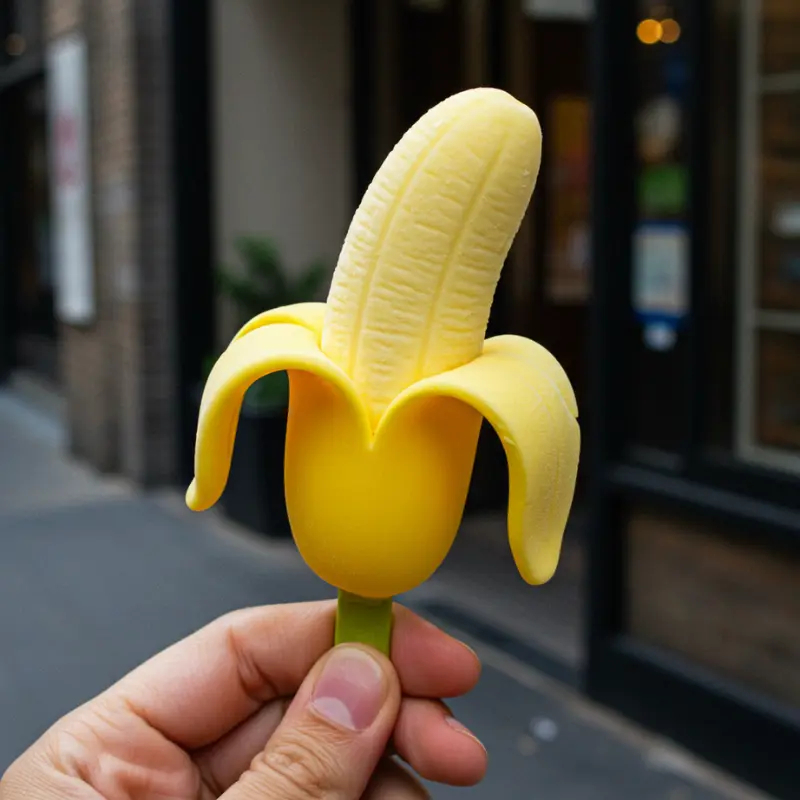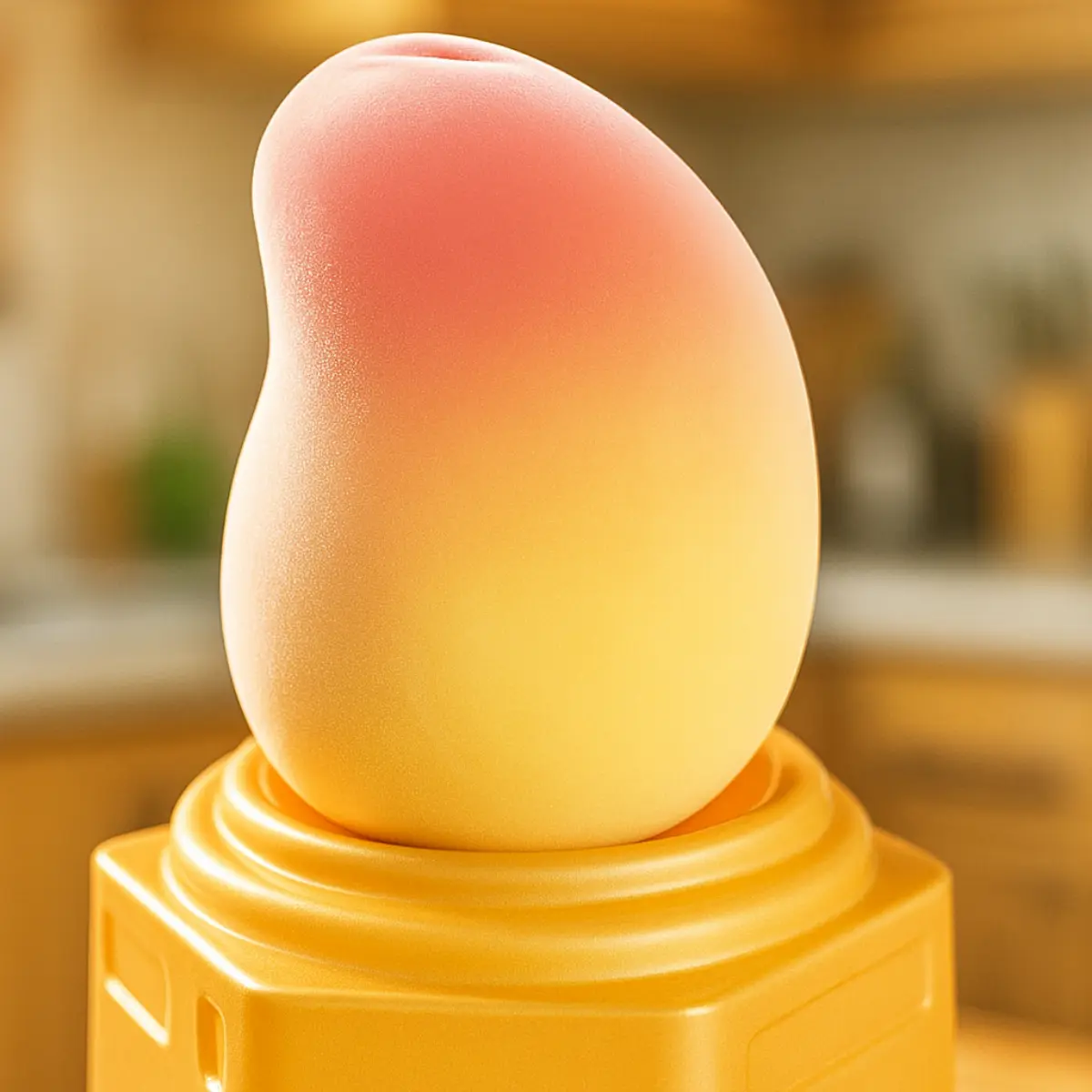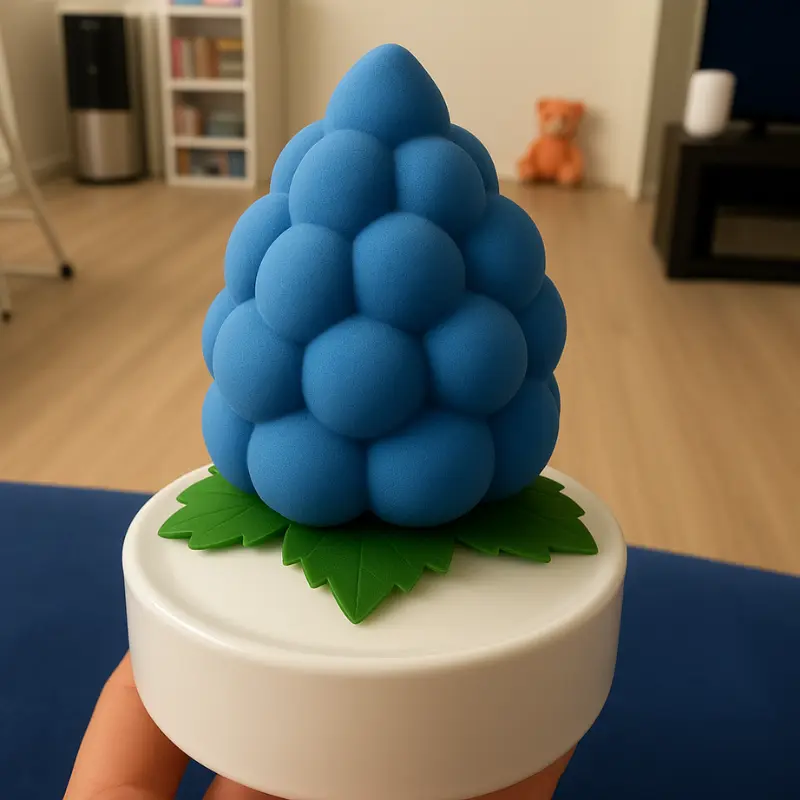Lemon shaped pastry is taking over dessert tables—and for good reason. These little citrus gems look like art, but they’re easy enough to try at home.
Whether you’re aiming for a sweet mousse, a creamy ice cream, or a sugar-coated cookie, there’s a lemon dessert for every skill level. Let’s peel back the layers and show you just how fun this can be.
Table of Contents
Lemon Shaped Pastry Recipe
A citrus-forward, mousse-filled lemon shaped pastry with a vibrant lemon insert and whipped lemon ganache, coated in velvet-sprayed yellow chocolate for a realistic look.
- Total Time: 12 hours
- Yield: 6 lemon pastries 1x
Ingredients
Lemon Insert:
3–4 fresh lemons (peeled and deseeded)
1 tsp lemon juice (extra)
1 tbsp lime juice
3 tbsp granulated sugar
1 tsp fruit pectin
1 tbsp Crème de Citron or Limoncello (optional)
Lemon Ganache:
1 cup heavy cream (divided)
1 tbsp lemon verbena
200g white chocolate, finely chopped
1 tsp powdered gelatin, softened
1/2 cup lemon purée
1/3 cup chilled heavy cream
1 tbsp Crème de Citron or Limoncello (optional)
Shell Coating:
100g white chocolate
100g cocoa butter
Yellow cocoa butter spray
Instructions
1. Peel lemons, boil 20 seconds, then chill in ice water and remove skins.
2. Purée peeled lemons and strain. Add lime juice, lemon juice, sugar, and pectin.
3. Cook on medium-high heat until it boils, then simmer 2 minutes. Cool to room temp.
4. Fold in small lemon chunks and optional Crème de Citron. Pour into molds and freeze.
5. Seal halves into full spheres and refreeze.
7. For ganache: heat half of the cream with lemon verbena. Steep 20 mins, strain.
8. Pour over white chocolate. Stir in gelatin, lemon purée, chilled cream, and liqueur. Chill overnight.
10. Whip ganache until firm. Fill lemon-shaped molds halfway.
11. Insert lemon spheres and fill the rest with ganache. Freeze until solid.
13. Melt white chocolate and cocoa butter. Spray on frozen pastries.
14. Finish with yellow cocoa butter spray. Optionally score with paring knife.
Notes
Use ripe, juicy lemons for best flavor.
Limoncello adds depth but is optional.
Chill molds between steps for cleaner layering.
- Prep Time: 1 hour
- Freeze Time: 11 hours
- Cook Time: 10 minutes
- Category: Pastries
- Method: Frozen, Molded
- Cuisine: Modern French
- Diet: Vegetarian
Nutrition
- Serving Size: 1 pastry
- Calories: 240
- Sugar: 19g
- Sodium: 30mg
- Fat: 15g
- Saturated Fat: 10g
- Unsaturated Fat: 4g
- Trans Fat: 0g
- Carbohydrates: 24g
- Fiber: 1g
- Protein: 3g
- Cholesterol: 35mg
Lemon Shaped Pastry Techniques at Home
Making a lemon shaped pastry at home might sound like something only expert pastry chefs can do, but with the right tools and a little creativity, it’s surprisingly doable. Whether you’re looking to wow guests or just want to try something different, these tips will help you shape realistic, bright yellow lemon desserts in your own kitchen.
The key is starting with the right base—mousse, curd, or cake that can hold its shape. Once you’ve chosen your filling, it’s all about how you shape and finish the outside to look like a real lemon. From specialty molds to airbrushing tools, you can go as simple or fancy as you like.
Moulds vs free-shaping: what’s easier
Silicone molds are the most beginner-friendly option. They’re easy to find online, and they take all the guesswork out of shaping. Just fill them, freeze or chill, and pop the pastry out once it sets. If you want a hands-on method, free-shaping can work well with firmer fillings. Wrap the mixture in plastic wrap, gently roll it into a lemon shape, and refrigerate it to firm up. It’s less precise but adds a rustic charm.
Airbrush and velvet spray tips
To make your pastry look like an actual lemon, adding texture and color is essential. Velvet sprays (a mix of cocoa butter and chocolate) give a soft, frosted look. If you’re using an airbrush, layer yellow, a bit of green, and white to mimic real lemon skin. Keep your pastry frozen before spraying—this helps the color stick evenly without melting your dessert.
Using cookies, chocolates, candies as lemon skins
If you don’t want to mess with sprays or molds, use lemon shaped pastry or chocolate shells to wrap your dessert. Sandwich mousse between two sugar cookies or pour curd into hollow chocolate halves. Even lemon shaped pastry shells can be filled with soft mousse or cake to create fun, bite-sized versions of the trend.
Lemon Shaped Ice Cream Creations
There’s something especially fun about turning ice cream into a lemon shaped pastry. It’s cold, creamy, and packed with flavor, but the lemon shape adds that extra wow factor. These desserts are perfect for summer parties or anytime you want to surprise someone with something that looks fancy but feels playful.
Whether you have molds or not, you can make lemon shaped pastry frozen treats using simple techniques and ingredients already in your kitchen. All you need is a good base like lemon ice cream or sorbet, a way to shape it, and a coating that sets fast and holds its shape.
No-mold freezer methods
No mold? No problem. Pour your lemon ice cream mix into cling wrap or small bowls and shape it by hand. Once it firms up in the freezer, smooth it out and refine the shape using your hands or a spoon. You can also use plastic Easter eggs as makeshift molds—just line them with plastic wrap for easy release. This method is great if you’re making a batch for kids or want to try different shapes.
Coating tricks: magic shell, cocoa-butter spray
To get that lemon peel look, coating is key. A lemon-colored magic shell made from melted white chocolate and coconut oil hardens quickly and adds a glossy shine. If you’re feeling more advanced, use cocoa butter spray. Spray it on a frozen surface for a soft, realistic finish. Either way, your lemon shaped pastry goes from basic to bakery-style in seconds.
Fun fillings: candy, posset, mousse
Want to take your ice cream to the next level? Add a surprise inside. Spoon a bit of lemon posset into the center before freezing or tuck in a piece of soft candy or whipped lemon mousse. These fillings add texture and make every bite more exciting. They also help your lemon dessert stand out from typical frozen treats.
Cedric Grolet Lemon Dessert Masterclass
If there’s one lemon shaped pastry that changed the dessert world, it’s Cedric Grolet’s “Le Citron.” This now-famous creation looks exactly like a real lemon—right down to the skin, stem, and dimples. But what makes it truly special is how it tastes: layered, surprising, and perfectly balanced between tart and sweet. The good news? While the original recipe is complex, many parts can be adapted for home kitchens with amazing results.
Grolet’s version takes days, but don’t let that scare you off. By breaking it down into smaller parts and using more accessible ingredients, you can still create something show-stopping without the pressure of perfection. It’s a fun challenge for anyone who loves a stunning lemon shaped pastry.
Secrets from Grolet’s “Le Citron”
The core idea of Grolet’s lemon is layering flavors that mimic real citrus. He uses a thin shell, smooth ganache, zesty gel, and soft cake inside. His dessert isn’t just shaped like a lemon—it tastes like one too. The outer layer is made from white chocolate mixed with yellow cocoa butter and airbrushed for realism.
To recreate the idea at home, start with a mousse or curd center and wrap it in a white chocolate shell. Add fresh lemon zest and juice to each layer for that bright, natural flavor that defines a great lemon shaped pastry.
Yuzu ganache & poached Meyer lemon filling
Grolet often uses yuzu ganache—a silky blend of white chocolate and citrus juice. If you can’t find yuzu, poached Meyer lemons are a perfect swap. Their sweet-tart flavor pairs beautifully with creamy components. Gently cook lemon slices in sugar syrup, then place them inside the dessert for a soft citrus surprise.
Home‑friendly adaptations
You don’t need a professional kitchen to try this at home. Use lemon-shaped silicone molds or even small bowls to help shape your dessert. Keep everything frozen between steps to keep its structure. Finish with a yellow spray or a light brush of lemon oil to give your pastry that bright, realistic finish.
Sicilian Lemon Mousse & Nuvolina Variations
Italy has its own take on lemon shaped pastry, and it’s just as impressive. Two standout recipes from Sicily are lemon mousse and lemon nuvolina. Both feature that bold citrus flavor but bring different textures and traditions to the table. These desserts are perfect for making molded lemons, with options that feel light yet full of flavor.
Sicilian lemon mousse is fluffy, cool, and often folded with whipped cream or mascarpone. Nuvolina, on the other hand, is thicker and more pudding-like. It’s often used in filled shells or small cakes. Each has its strengths, and both work great for lemon-shaped desserts if you want a rich filling without fuss.
Texture deep‑dive: mousse vs nuvolina
Mousse is all about air. It’s whipped, delicate, and melts on your tongue. It’s perfect for molds because it sets quickly and can be flavored in endless ways. Nuvolina is denser and feels more like custard or pastry cream. It holds its shape better for hand-sculpting and is ideal if you’re planning to layer different fillings or insert a center surprise.
Flavor crack: citrus layering
What makes these desserts shine is the use of multiple citrus flavors. Use fresh lemon juice, zest, and maybe even a splash of limoncello or orange juice. This layered approach builds complexity without needing lots of ingredients. Even a drop of lemon extract can make your mousse pop with brightness.
Presentation tips for shaped desserts
When serving mousse or nuvolina inside a lemon shaped pastry, add small details to make them more lifelike. Use a tiny brush to add yellow food coloring, or spritz edible shimmer for a glossy look. For a rustic twist, press your shaped dessert into a plate of fine sugar to give it a frosted, fresh-off-the-tree look. Add a small mint leaf or edible flower on top to complete the lemon illusion.
Lemon Posset vs Lemon Mousse Cake
When it comes to citrus-based desserts, lemon posset and lemon mousse cake are two crowd-pleasers that bring bold flavor and creamy textures. But while they share a love for lemon, they’re very different in how they’re made, served, and shaped. Understanding the difference can help you choose the right one for your next lemon shaped pastry idea.
Lemon posset is a traditional British dessert that uses just three ingredients: cream, sugar, and lemon juice. It’s silky, slightly tangy, and sets on its own without gelatin. Lemon mousse cake is more layered—it combines sponge, mousse, and sometimes curd or jelly for a more complex bite. Each one has its strengths, and depending on your mood or event, one might work better than the other.
What posset delivers that mousse can’t
Lemon posset wins on simplicity. There’s no baking, no whipping, and no waiting for gelatin to set. You just simmer cream and sugar, stir in lemon juice, and let the acid do the magic. It’s rich and tangy with a pudding-like feel. The texture is firmer than mousse, which makes it great for molded desserts that need to hold their shape, especially in mini lemon shaped pastry forms.
Quick posset molds for mini lemons
If you’re short on time but still want that wow factor, pour lemon posset into small lemon moulds or silicone ice cube trays. Chill them until firm, pop them out, and dust them with powdered sugar or spray with edible yellow. You’ll have cute, tart lemon “pods” ready to serve without the fuss.
Combining posset and sponge layers
Want the best of both worlds? Layer a soft sponge cake base with a piped layer of lemon posset on top. You can also freeze the posset into a dome shape, then sit it on sponge rounds or press it into a molded shell. This adds texture and depth, giving each bite a soft, citrusy punch with a fluffy finish.
Lemon Shaped Cookies & Sugar Treats
If you’re after a fun and easy way to try the lemon shaped pastry trend, cookies and sugar treats are the way to go. These desserts are great for parties, bake sales, or gifts, and they don’t require fancy tools or ingredients. From decorated sugar cookies to candy-filled lemon bombs, you can get creative with shapes, colors, and fillings.
Start with a classic sugar cookie base, roll it out, and use a lemon-shaped cutter (or an egg-shaped one, turned sideways). You can flavor the dough with lemon zest or extract to keep the citrus theme strong. Once baked, decorate with icing, sprinkles, or even edible glitter for that sunny finish. These cookies are a simple way to bring the charm of a lemon shaped pastry into a fun, bite-sized treat.
Royal icing lemon details
Royal icing is perfect for adding crisp lemon outlines, speckled skins, and shiny finishes. Tint your icing with yellow, white, and green for that realistic look. Use a piping bag for clean lines or go freehand with a brush for a more natural effect. Add seeds, stems, or even faces for a playful take on the lemon shaped pastry theme.
Cookie cutters & edible candy coatings
No lemon shaped cookie is complete without the right shape. If you can’t find lemon cutters, egg-shaped or oval cutters work well. Once the cookies are shaped and baked, coat them with white chocolate dyed yellow for a candy-shell effect. It hardens quickly and adds a satisfying snap to every bite—just like the shell of a chilled lemon shaped pastry.
Trendy candy-filled lemon sugar bombs
For something flashier, try a sugar shell filled with candy—think of it like a lemon-shaped piñata. Mold sugar and water into half-spheres, let them harden, then glue two halves together with royal icing, leaving space inside for lemon-flavored candies or sprinkles. These sweet bombs are big hits at parties and make adorable edible gifts.
Lemon Shaped Cake Ideas for Occasions
A lemon shaped pastry doesn’t always have to be bite-sized. If you’re celebrating a birthday, shower, or spring party, turning a full-size cake into a giant lemon is a playful and impressive idea. These cakes are perfect for layering with mousse, curd, or cream and decorating to look like a real fruit. You can also scale them down into mini versions for easy serving and a fun dessert display.
Start with a firm cake base like pound cake, almond cake, or sponge—anything that can hold its shape. Once baked, carve it into a lemon shape using a serrated knife. Use frosting or ganache to fill any gaps and smooth out the surface before chilling it well. Then it’s ready for the final layer: fondant, velvet spray, or colored white chocolate. These steps bring your lemon shaped pastry vision to life, even on a large scale.
Mini mousse‑filled cake lemons
Mini lemon shaped pastry cakes are a big hit for events where you want everyone to get their own dessert. Use a silicone mold to shape a mousse filling with a hidden curd center, then add a thin layer of sponge on the bottom for stability. After freezing, coat them with a yellow velvet spray or dip them in white chocolate dyed lemon yellow for a clean, glossy finish.
Full‑size sculpted lemon cakes
To create a large lemon cake, stack several cake layers with lemon curd or mousse in between. Carve the shape and coat with buttercream or ganache, then chill until firm. Finish with fondant, edible yellow spray, or even crushed cookies to mimic skin texture. Add a fondant stem or mint leaves for decoration. These cakes are the centerpiece version of a lemon shaped pastry, perfect for birthdays or themed gatherings.
Customizable flavors: limoncello, almond, ricotta
Lemon pairs beautifully with so many flavors. Add limoncello to your frosting for an adult twist, mix almond flour into your batter for a nutty undertone, or fold ricotta into the mousse for a creamy, soft texture. These custom touches make your lemon shaped pastry even more memorable and flavorful.
Candymaking in Lemon Shells
If you’ve mastered the basics of the lemon shaped pastry, candy is the next fun step. Shaping and filling candy shells to look like lemons is a creative way to make bite-sized treats, party favors, or even edible decorations. With the right molds and fillings, you can make candy that’s just as beautiful as it is tasty.
Candy lemons are made using molds or free-form techniques. Sugar shells or hard candy coatings are shaped and filled with curd, jam, or ganache. The contrast of crunchy shell and soft center makes each bite a surprise. You can also use these for gifting or dress them up for holiday tables.
Candy lemon molds
Use hard plastic or silicone lemon candy molds to shape melted sugar or isomalt into shells. These give a glossy, glass-like look and hold up well for filling. Let the shells cool completely before handling. You can color them with yellow food dye for realism or brush on shimmer dust for extra pop.
Hard‑shell candy filled with curd
To fill candy shells, make a quick lemon curd and pipe it inside. Seal two halves together using melted candy or a sugar glaze. The outside cracks with a bite, revealing a tangy surprise. If you’re gifting these, wrap them in colored foil or place them in paper cups like truffles.
Gift packaging & candles
These lemon candy creations make perfect gifts. Wrap them in clear cellophane or tuck a few into a small box with ribbon. For something truly unique, you can even place a wick into a hollow lemon candy shell to create edible lemon shaped candles. Just remember to label it clearly—because your candles might look too tasty to resist.
FAQ
What is a lemon shaped pastry and why is it trending?
How does Cedric Grolet make his iconic lemon dessert?
Can I use airbrush/velvet spray at home effectively?
What’s the difference between lemon mousse and lemon nuvolina?
Is lemon posset easier than mousse cake?
How do you make lemon shaped ice cream without molds?
Share Your Experience
Tried one of these amazing lemon shaped Pastry? Made your own version at home? We’d love to hear about it! Share your experience, your favorite flavor, or even your own twist on the trend in the comments below.
If you snapped a pic, don’t forget to tag us on social media—we might feature your creation!
Spread the joy:
Your stories and photos make this community sweeter—one scoop at a time.


